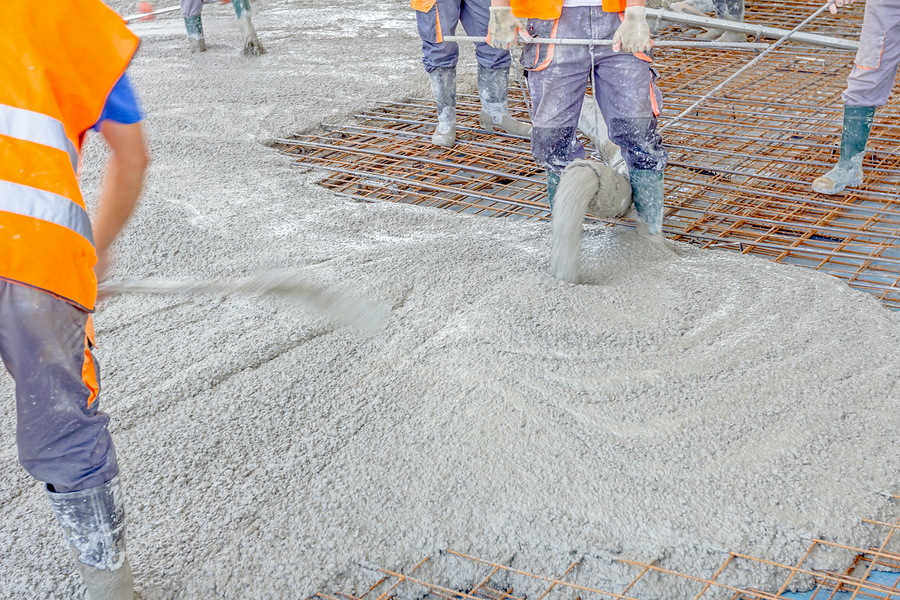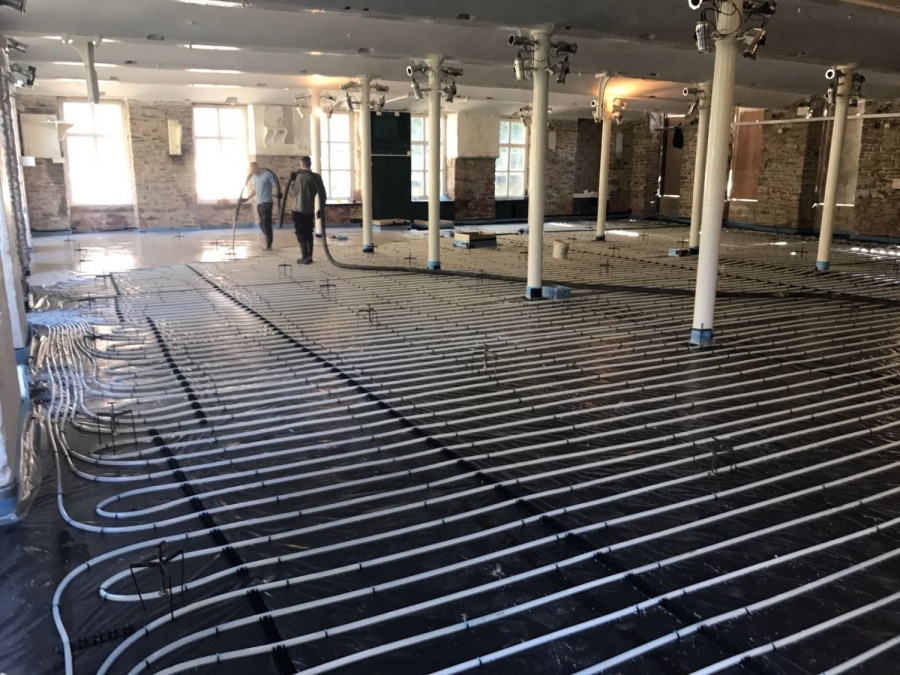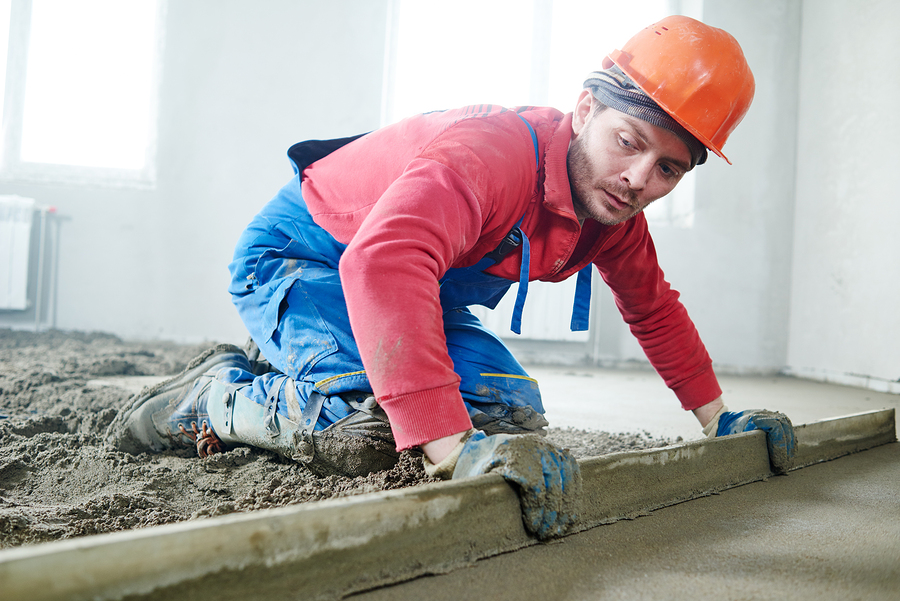Underfloor Heating: What is it, How it Works & the Different Types

Here at Screed It, we understand that you’ll want to make the best, most informed decision possible before carrying out any work on a flooring project. This is why we’ve brought together this specialist information on the types of underfloor heating, how they work, and what should be done to keep them running once they’ve been installed.
What is Underfloor Heating?
Underfloor heating (sometimes abbreviated to UFH) is a method of heating any interior space by generating and distributing heat underneath the floors of the property. It can be used as a secondary heating system, or it can even become the primary system and replace traditional radiators as the main heat source of a property.
Types of Underfloor Heating
There are two types of underfloor heating available for work projects and renovations, electric or “dry” underfloor heating systems and hot water or “wet” underfloor heating systems. Which type of system you choose will be your decision, though you may wish to consider factors such as running costs, any deadlines you have for installations or renovation work, and how much space you have available for your system in the room where it should be installed.
To give an example, if you are looking to complete the floor of a new build you may want to look at having a wet underfloor heating system installed, as these are designed to heat larger spaces and are generally more cost-effective than electric systems. However, if you need a smaller space covered or need to renovate a property that has already been built, then electric underfloor heating is the better fit and will also be less disruptive to install.
What Temperature Does Underfloor Heating Run At?
The running temperature of underfloor heating will vary, depending on the needs and wishes of the property owner. However, BS EN 1264-2[1] limits the maximum floor surface temperature to 29°C, or to 27°C where floor tiling is proposed. In most living areas, it is suggested that 21°C will keep the temperature in the room comfortable, while bedrooms are set slightly lower (usually around 18°C).
The water that flows through a wet underfloor heating system’s pipes will vary between 35°C and 60°C, depending on heat loss from the building. The temperature you set the system at may vary between these, depending on the type of flooring you have installed above the pipes or wire layout.
Turning the temperature down by a single degree on your underfloor heating system could also help to keep it energy-efficient, while never compromising on the comfort of the room’s occupants.
How Does Underfloor Heating Work?

Once you’ve decided to install underfloor heating as part of your work project, the next step should be to make sure you know how it works. This helps you to make the most informed decision for your work and ensures the system you’re using is the most efficient one for your property’s needs.
A typical S-plan underfloor heating system works by evenly distributing heat throughout the flooring of a property. Often, a material such as screed will be laid over it to seal any potential air pockets, which keeps the heat distribution even and makes the system more efficient. The temperature is then monitored by a thermostat to make sure it is kept at a consistent level.
How the heat is distributed will all depend on which type of underfloor heating you have:
Electric Underfloor Heating
An electric system makes use of an ultra-thin wire that is then installed underneath the floor level. The wire is then heated, and the heat transfers outwards.
Wet Underfloor Heating
Wet underfloor heating systems are made up of a complicated pipe layout that can come in a number of different designs. These designs are created to ensure the most efficient and even transfer of heat in a room, though some designs may achieve this more effectively than others. Hot or warm water is then pumped through these pipes, which will also become hot and transmit the heat to the room through the rest of the floor.
You can use any central heating source in a property to provide hot water for a wet underfloor heating system. These include:
- Biomass boilers
- Combination boilers
- Condensing boilers
- Heat pumps
- Standard boilers
- Stoves
What Type of Flooring is Best for Underfloor Heating?
The best type of flooring for underfloor heating is one that makes the most of the potential heat transfer. Hard surfaces such as screed, stone, engineered wood, or ceramic tiles are the most thermally conductive and would therefore offer the best heat transfer. However, there are a number of other options you might want for your property that will also work.
Other flooring options that you may want to consider for your property once underfloor heating has been installed include:
- Carpets
- Linoleum
- Resin
- Vinyl
Caring for Your Underfloor Heating System

Once an underfloor heating system has been installed you should keep in mind how it will need to be maintained. This differs depending on which type of underfloor heating you have installed under your property. Hot water underfloor heating systems, for instance, will need to be regularly flushed out because sludge and rust can build up inside them over time.
To do this, you’ll first need a pump that’s suitable for your boiler. This needs to be fitted to your system so that it sends a flush of chemicals through the pipework and clears out any corrosion, sludge debris or rust. This should keep the system in its full working order.
Electric underfloor heating systems, on the other hand, should not need frequent servicing. However, we do suggest having them checked over by a specialist engineer so that you know your system is working to its utmost efficiency and is not in need of any repair work.
Contacting a Specialist Underfloor Heating Contractor
If you have been considering screed flooring for a planned work project and you believe the finished result would also benefit from an underfloor heating system being installed, contact our team at Screed It today. We’ll be ready to provide the wet system that suits all your needs, and can have it installed exactly as you need it underneath the floor coverings required by the terms of your project. We’ll also be happy to carry this out anywhere in the UK, so you may rest assured that you’ll never be out of reach of our service.
One of our staff members will be waiting to discuss your options when you get in touch with us. They will be able to help you make the best decision for your flooring, so you can feel confident in placing an order and arranging a date for installation.
- Categories:
- Blog
